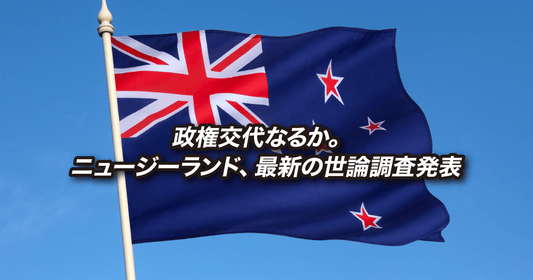
This month, we have received news such as the decline in approval ratings for the Prime Minister and the Labour Party, and former National Party leader Simon Bridges retiring from politics at the age of 45. In this article, we will look at New Zealand politics through numbers.
Falling approval ratings for the Prime Minister and the Labour Party
New polls show that approval ratings for New Zealand Prime Minister Jacinda Ardern and her Labour party are falling.#BREAKING : The latest 1News Kantar Public Poll results -
Party support: National: 39% Labour: 37% Green Party: 9% ACT: 8% Te Pāti Māori: 2% New Zealand First: 2% pic.twitter.com/bnwy4rnXM4 — 1News (@1NewsNZ) March 10, 2022
Labour's approval rating was 37%, losing to National, which won 39%, making it the second most popular party. Prime Minister Ardern's approval rating was 34%, a significant drop from 58% in 2020. This is the lowest level since she became prime minister in 2017.
This reflects the public's distrust, including concerns about the government's response to the prolonged COVID-19 pandemic and dissatisfaction with ever-rising prices. Prime Minister Ardern recently announced that she would significantly accelerate the acceptance of foreign tourists. Will this help her approval rating recover?
Next, I would like to explain how politics in New Zealand works.
Unicameral system of 120 members
New Zealand has a unicameral system of 120 members, with the current ruling Labour Party holding a majority of 65 seats.
The term is three years, and since the last general election in which the Labor Party won a landslide victory was in 2020, the next election will be in 2023. As of now, the term is not even half over, and the Labor Party still has time to make up for lost ground, so it will not be easy for the National Party to achieve a change of government. We will be paying close attention to the future trend in the approval rating.
A closer look at the number of seats shows the often-discussed gender gap in New Zealand. Of the 120 seats, 61 are male and 59 are female. Women make up almost half, or 49%, of the total.
A few years ago, this parliament also made headlines when Speaker Trevor Mallard held and breastfed a baby brought by one of the council members while the parliament met.
Normally the Speaker's chair is only used by Presiding Officers but today a VIP took the chair with me. Congratulations @tamaticoffey and Tim on the newest member of your family. pic.twitter.com/47ViKHsKkA
— Trevor Mallard (@SpeakerTrevor) August 21, 2019
By the way, the baby's father is Senator Tamati Kofi, who is openly gay and married to his male partner. This photo was taken in 2019, but it shows the diversity of Parliament, including the ratio of male to female members.
Another question is, what about the age of the members of parliament?
What is the average age of lawmakers?
On March 15th, breaking news broke that former National Party leader Simon Bridges was retiring from politics. Bridges is just 45 years old.#BREAKING | National MP Simon Bridges to quit Parliament https://t.co/FwtJ3cLtZs pic.twitter.com/XZQHX1pTU1
— nzherald (@nzherald) March 14, 2022
The news is breaking, so he's still too young to retire from politics. This news made me curious about the age of New Zealand's parliament members, so I looked it up and found that the average age of the 120 members is 47.38 years old.
The majority of lawmakers are in their 40s, accounting for nearly 40% of the total. Next are those in their 50s at 37%, and then those in their 20s at 28%. Only 10% are over 60 years old. The oldest current lawmaker is 68 years old. The youngest is 26 years old. Compared to Japan, we can see that a much younger generation is playing an active role.
View this post on Instagram
This photo shows new lawmakers receiving orientation in the Capitol following the 2020 elections that elected the current lawmakers.
The New Zealand Parliament is often talked about for its diversity, not just Prime Minister Ardern, so it will be exciting to see what kind of members will emerge in the future.





